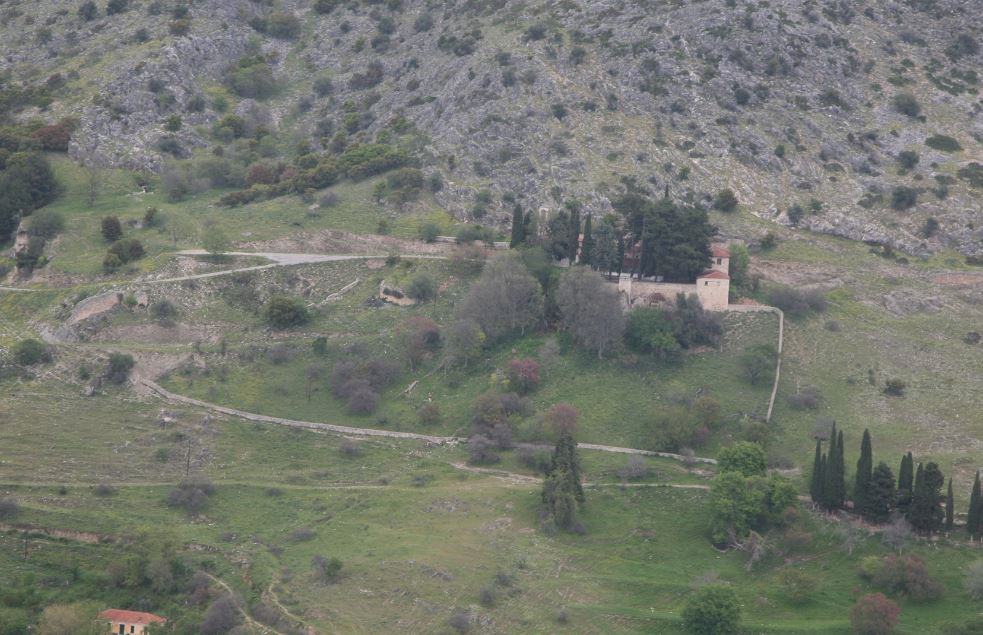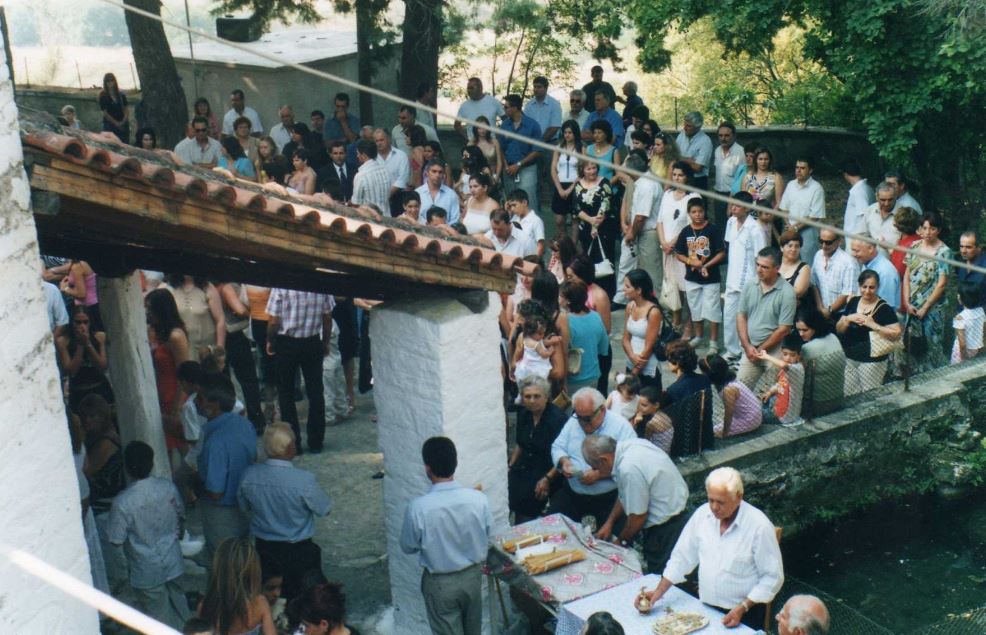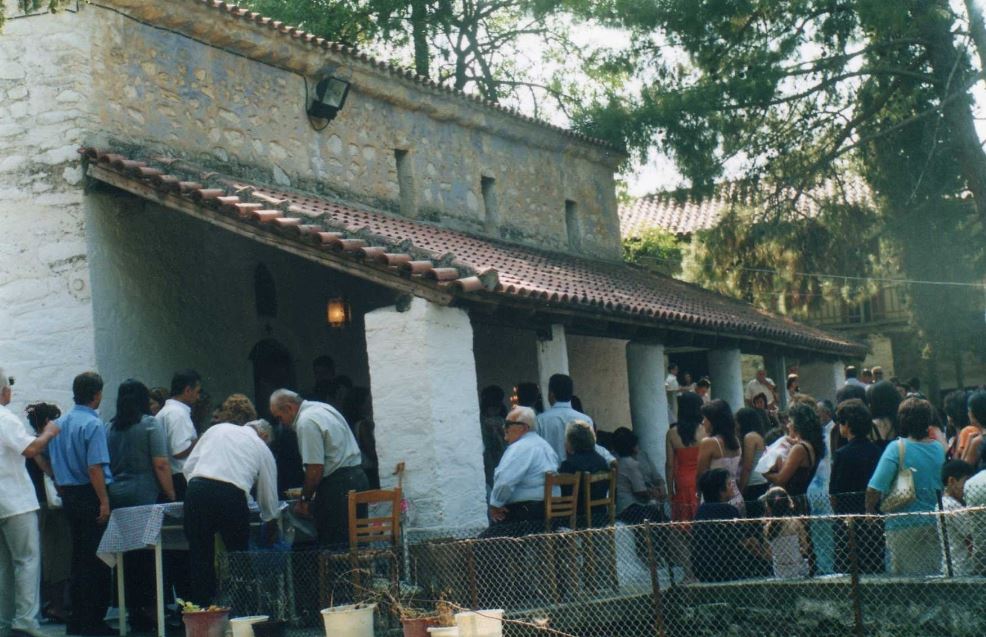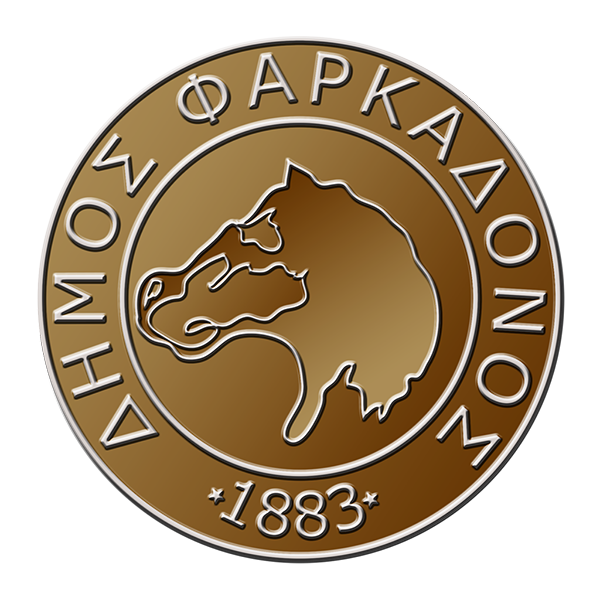The Monastery is located just 300 meters from Grizano. It is assumed that it was built in the 14th century and was part of the Varlaam Monastery of Meteora. When the Ottomans occupied Thessaly they destroyed the monastery because they considered it a dangerous defensive castle. This is how it remained until 1710 when Gero Litsios Michalakis got permission to renovate it.
The legend says that when the work started the Turks were afraid that a Castle would be built and the Greeks would use it as a base for their revolutionary purposes and sent a detachment to check the work. When the Turks arrived on horseback at the iconostasis of Agios Dimitrios at the beginning of the Village, the horses stopped and did not advance. While the Turks pressed and beat them to advance, they remained motionless. Then the Turkish agha ordered that if a monastery was built and not a castle, he would not burn it down and would give permission. Immediately the horses moved and the Turks believed. When they arrived at the monastery and started the check the horses that were turning in the courtyard of the Monastery started arguing and pushing each other. One of the horses fell over the cliff. Then Agas tells Old Licio, if the horse is not hurt he will let the work continue, if the horse has struck then he will burn it. They all ran together to see what happened and saw the horse grazing carelessly. The Turks then believed that a miracle had occurred and allowed the work to continue. To make sure that Old Licios would not engage in revolutionary activities, they forced him to marry the twenty-year-old housekeeper who served him. From the renovation onwards, the Monastery had monks.
In 1894, three other neighboring monasteries were annexed to the monastery as shares, namely Zoodochos Pigi Panagitsa, Saint John the Theologian Zarkos and Nativity of the Mother of Orphan Oichalia. In 1901 the monastery was annexed to the monastery of Agios Zarkos together with the monasteries of Panagitsa and Oichalia. During the Occupation it was looted. The Monastery had many estates and mainly vineyards. There was an inexhaustible tap in the enclosure.

The arched entrance of the Monastery precinct is to the West and above it opens an arched alcove with a venerable fresco of Agios Dimitrios on its drum and of Agios Georgios and Nestor on the inner side and with an inscription. To the left of the entrance there is a tower with a screen. The cells occupy the NW and E sides of the monastery.
The catholicon is single-aisled with a chancel on the south side. It has two entrances, one on the west and one on the south side on the lintel of which the date I710 is engraved. Higher up, a blind alcove opens with a double-curved arch and a fresco of Agios Dimitrios. To the left of the south entrance there is a fountain consisting of a blind arch, in the drum of which a blind pointed niche opens. In the alcove on the Agios Vimas there is a low built terrace. Above the niche is the Annunciation of the Virgin Mary. In the quadrant of the niche, Platytera with 4 prophets and a microgrammatic inscription below.
All the walls in the main temple are covered with frescoes. They depict the Thessalian Hierarchs – Agios Oikoumenios Trikkis, Achillios of Larissa, Bessarion of Larissa and Seraphim of Phanarius and Neochorio. 5 icons are placed on the wood-carved iconostasis. In one of them the Forerunner with a microlettered dedicatory inscription in 1820 and in another the Prophet Elias with a microlettered inscription and behind the image the date 1820. The same can be observed on the curtain of the Beautiful Gate.
The courtyard of the Monastery is quite spacious, it extends mainly South of the Temple, but also East and West of it, also full of trees. The water, wonderful and abundant, from a natural fountain, which passes under the Main Temple and forms a small artificial pond, full of fish, which the inhabitants, however, do not eat “so that Saint (Dimitris) does not get angry”.
A high stone mandra surrounds the courtyard, here and there battlements and in the two corners (Northwest and Northeast) rises a tower. In the first there is the adobe belfry, covered with cement and at the top a Cross, also cement and finally on the bell there are the relief inscriptions.
The courtyard has two entrances. The western one preserves the old wooden door with the wooden latch built into the wall. It is strongly protected from wars and from confiscation. At the other entrance, to the east, there is now an iron door. On the outside, in the arched shell above the door, Saints George and Nestor are painted on its insides, and in the background, Saint Demetrius with the inscription.

Also kept in the temple are:
– Reliquary with the capital letter inscription: “Casket of the Holy Monastery of the Holy Great Martyr Dimitrios Grizanos by subscription with the abbot Prokopios 1866 August 20 by the hand of Athanasios and Pavlos NBR Chorion Kalarritis”
– Old carved wooden door of Orea Pyli.
– Anti-monthly with microletter inscription.
– Volume with liturgies of Saints Charalambous (Enetiion 1774), Nikanoros (Enetiion 1774), Spyridon (Enetiion 1775) and Vissarion (in Constantinople 1800),
– Monthly February. Year 1732, which belonged to the monastery of Panagia Orfanou,
– Monthly April, Year 1732. of the monastery Zoodochos Pigi Panagitsa.
– Monthly March. Year 1740.
– Monthly September. year1740,
– Pentecostal. Year 1769. of the Zoodochos Pigi Panagitsa monastery.
– Monthly January. Year 1795.
– Gospel, Year 1799
– Monthly December. Year 1805,
– Headless. Monthly October 18th century and Clock the Great 19th century and
– Headless and Stumped: Two 18th-century Pentecostals and the Month of May”.
The last monk of the Monastery left in 1946. The courtyard of the Monastery is quite spacious, it extends mainly South of the Temple, but also East and West of it, also full of trees.
A high stone enclosure surrounds the courtyard, here and there battlements and at the two corners (Northwest and Northeast) rises a tower. In the first there is the brick belfry, covered with cement and at the top a Cross, also concrete and at the end of the bell there are the relief inscriptions.


